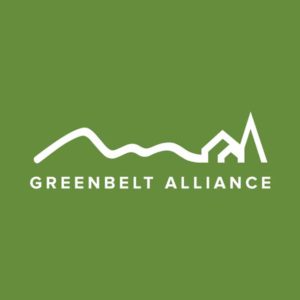November 3, 2010
CONTACT:
Jennifer Gennari, Communications Director, jgennari@greenbelt.org, (415) 717-2179
Amanda Brown-Stevens, Programs Director, abrownstevens@greenbelt.org, (415) 543-6771 x312
Bay Area backs sprawl-stopping lines, funds for great neighborhoods
Tassajara Valley saved from development plans; Sonoma County strengthens growth protections; local support for better neighborhoods
San Francisco—Around the Bay Area, residents voted decisively for a protected greenbelt and great neighborhoods. Voters backed urban growth boundaries that control sprawl and funding for safer city streets and more transportation choices.
“With Tuesday’s election, voters validated our vision for a better Bay Area,” says Jeremy Madsen, Greenbelt Alliance Executive Director. “Local voters spoke clearly and definitively against sprawl development and in favor of protecting our stunning landscapes and making our cities and neighborhoods even better than they are today.”
Here are the results of Tuesday’s election on local measures that affect the environment and urban vitality:
- In Contra Costa County, San Ramon residents overwhelmingly defeatedMeasure W (71.91%). Voters rejected breaking the city’s urban growth boundary to allow development in the Tassajara Valley, a critical wildlife habitat and agricultural area.
- In Sonoma County, Measure O passed by 66.9%, renewing Santa Rosa’s urban growth boundary until 2035. Measure T won with 64.5%, renewing Petaluma’s urban growth boundary through 2025. And in Cloverdale,Measure Q, which establishes the city’s first urban growth boundary, passed by 56.7%.
- Berkeley residents passed Measure R (64.21%). Now the city council has direction from the voters to put in place a plan for a sustainable downtown — a plan that will put homes near transit and jobs and in the process reduce greenhouse gas emissions.
- Five of seven county vehicle license fee initiatives passed. These measures will provide more revenue for making streets safer for pedestrians and cyclists in Alameda, Marin, San Francisco, San Mateo and Santa Clara counties.
Although disappointed by the failure of Proposition 21 to fund state parks and the passage of Proposition 26 which will hamper cities’ abilities to provide important services, Greenbelt Alliance celebrates results from these two key state-wide propositions:
- The defeat of Proposition 23 (61.3%) is a major victory in California’s effort to control greenhouse gas pollution and create a green economy.
- Californians passed Proposition 22 (60.9%), which will halt the state from balancing the budget at the expense of local governments and public transportation.
“Bay Area voters once again showed their commitment to protecting our open space, fighting climate change, and creating a future with a higher quality of life,” says Amanda Brown-Stevens, Director of Programs. “People are both saying no to bad development and saying yes to good development that will help create a more sustainable, equitable, vibrant future. That’s our Grow Smart vision, and we’re going to keep working to make the Bay Area the best place to live.”
###
For 50 years, Greenbelt Alliance has been the San Francisco Bay Area’s advocate for open spaces and vibrant places, with offices in San Francisco, San Jose, Walnut Creek, San Rafael, and Santa Rosa. www.greenbelt.org





